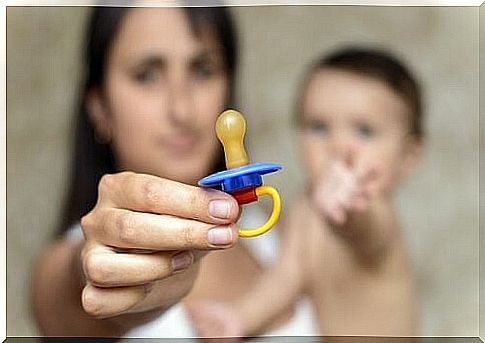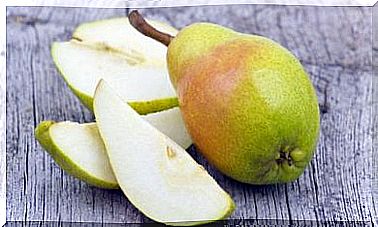4 Tips To Prevent Your Child From Sucking Their Thumbs

Parents are often worried when they see their young children putting their fingers in their mouths, as they know that this habit can cause serious problems for oral health, for example. Therefore, parents look for different methods to prevent the child from sucking the thumb.
Thumb sucking is a normal action. Many children practice it from an early age and, it is curious to know that many fetuses were observed on ultrasounds sucking the thumb.
Finger or pacifier?
The sucking reflex is natural for the baby. He needs this reflex to survive. Sucking quenches hunger and produces calm and tranquility. A nursing baby may not use a finger and may not need a pacifier. He has his mother’s breast to feed and soothe himself.
However, it is normal for a baby to start inserting one or more fingers into the mouth from 2 to 6 months. It is one of the ways he has to calm down and it is a gesture that is part of the first stages of development.
When parents observe this behavior, many of them decide that it is better to use a pacifier before the little one gets into the habit of sucking his thumb.

They often argue that when the time comes, it will be easier to take the baby’s pacifier than the habit of sucking the thumb.
However, the consequences of using a pacifier or sucking your thumb after 2 years of age are practically the same:
- Malformation in the dental arch.
- Pronunciation problems.
- They can hide more severe emotional upsets.
How to prevent your child from sucking his thumb?
Just as it’s normal for a baby to start putting their fingers (and everything between their fingers) in their mouths, they often get over this step after they’re 2 years old.
When the child turns 3 or 4 years old and frequently sucks one of his fingers, it is necessary to observe him and pay attention to the reasons that motivate the maintenance of this behavior. This way, it will be easier to find the best solutions to prevent your child from sucking their thumbs and to take care of their dental arch.
However, it is necessary to understand that not all children are the same and that each one has its own rhythm. Therefore, a good indicator that action is needed is when the incisors and canines have come out.
If you also begin to notice that your teeth are separating to make room for your finger, the time to interfere will have arrived. Next, check out 4 key recommendations.
1. Identify the cause and offer options
If your child sucks his thumb to fall asleep, help him with bedtime. Follow him while he sleeps. Tell him a story. Offer him a favorite bear or doll as an alternative to the finger.

If he sucks his thumb when he’s stressed or anxious, he might just need you to spend time with him and talk for a while. Maybe he needs you to hug him and offer comfort so he can find tranquility and overcome the fear that disturbs him.
If, on the other hand, your child turns to his finger when he’s upset, it’s time to apply creativity and provide distractions. Starting a game, making a craft, taking a walk, may be what your child is asking you to do when you put your finger in your mouth.
2. Explain the consequences
Sometimes home remedies or specialist consultations are resorted to before simply sitting down and talking to the child. Offer her a simple explanation for why it’s not convenient to keep sucking her thumb.
You will be amazed at the ability of children to understand the explanations we give them and act accordingly. Explain to the child that their teeth can be deformed, that they are no longer a baby, and that it is time to stop sucking their thumbs.
Avoid ridiculing her in front of other people, much less yelling at her or punishing her when you see her with your finger in your mouth. Maybe she’ll stop sucking her thumb in front of you, but keep doing it in hiding. It is much better to give positive reinforcement whenever she is able to overcome the causes (sleep, anxiety, annoyance) for which she sucks her thumb.
3. Cover your finger
You may find it necessary to apply a more forceful measure to prevent the child from sucking his thumb. It is likely that your child’s finger has formed a callus from the suction. Cover the callus with a bandage and explain to your child that it is necessary to heal the callus that has formed.

The adhesive tape should be well glued but not too tight. It is necessary that your child cannot take it out alone. Change it twice a day, leave it during the day and at night for about 15 days.
If the child insists on putting his finger in his mouth, the taste and texture of the adhesive will be unpleasant. Many mothers also put vinegar or lemon on their finger. Assess if this works for you.
After two weeks, consider whether it was possible to prevent the child from putting his finger in his mouth. Did you try to minimize the causes that motivate this habit? It is very likely that she will already be able to change her behavior.
4. Look for an expert
If none of the options we’ve given you to prevent your child from thumbsucking have worked, it’s certainly time to go to a specialist. An orthodontist can design a device that prevents the child from putting their finger in their mouth.
But if the frequency and intensity of the habit is disproportionate and uncontrollable, it will be necessary to consult a psychologist. Constant finger sucking can hide a deeper upset or a much bigger problem.









